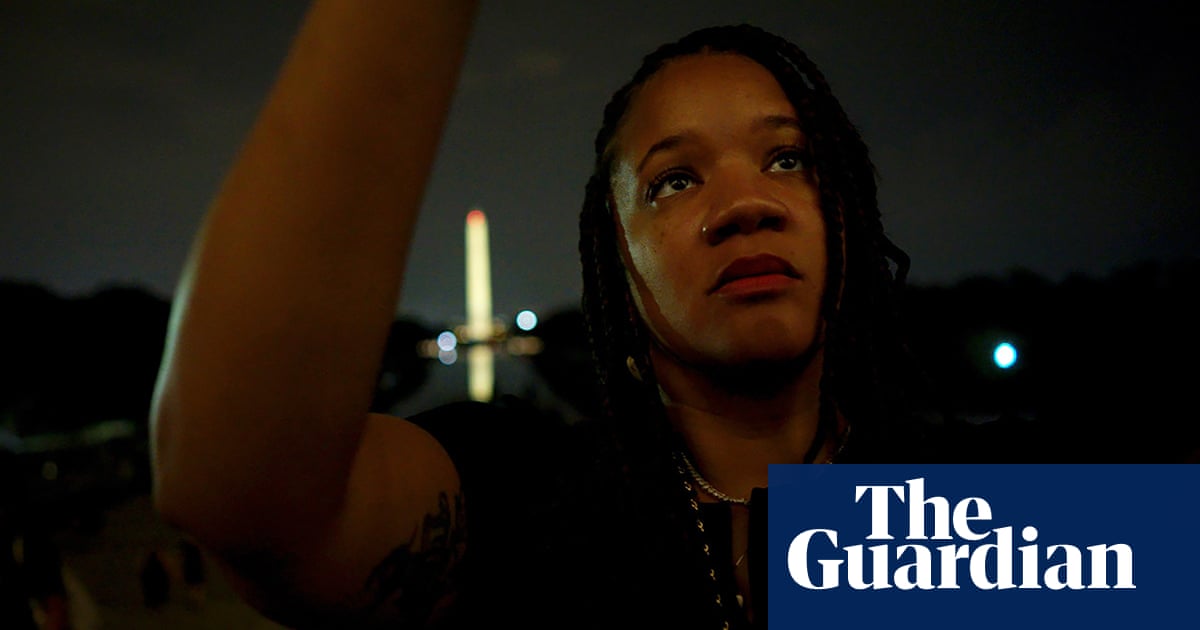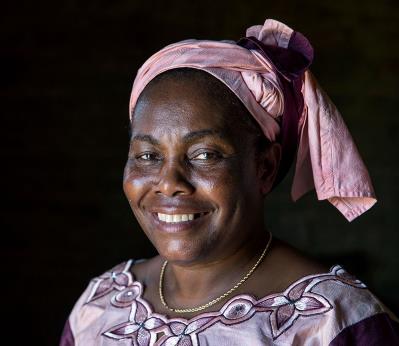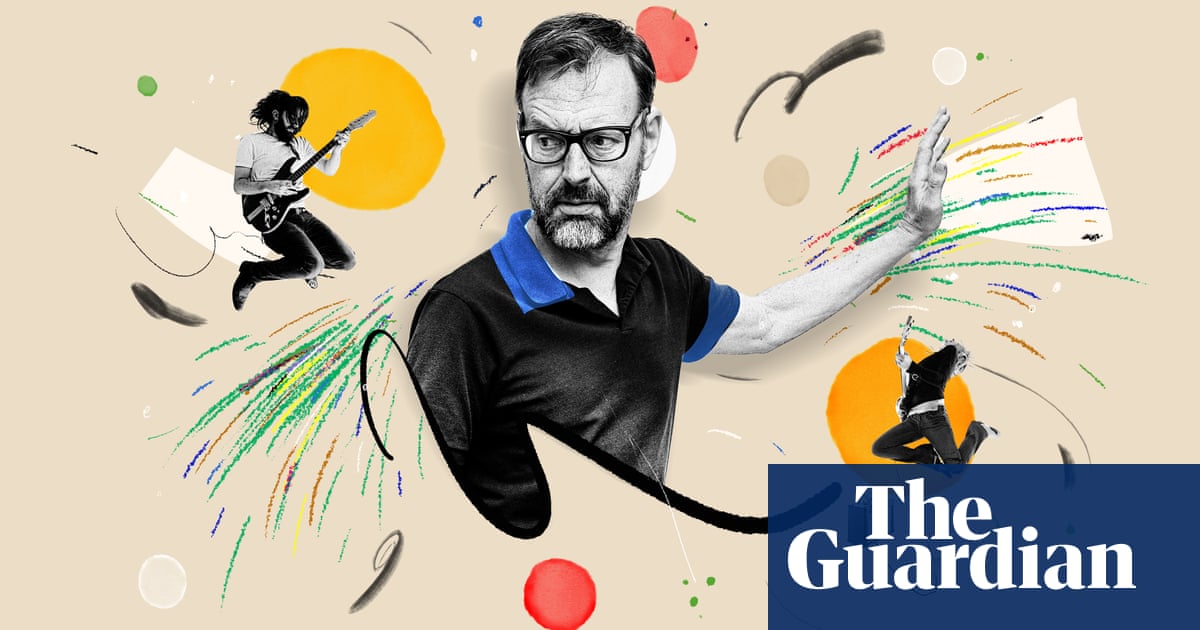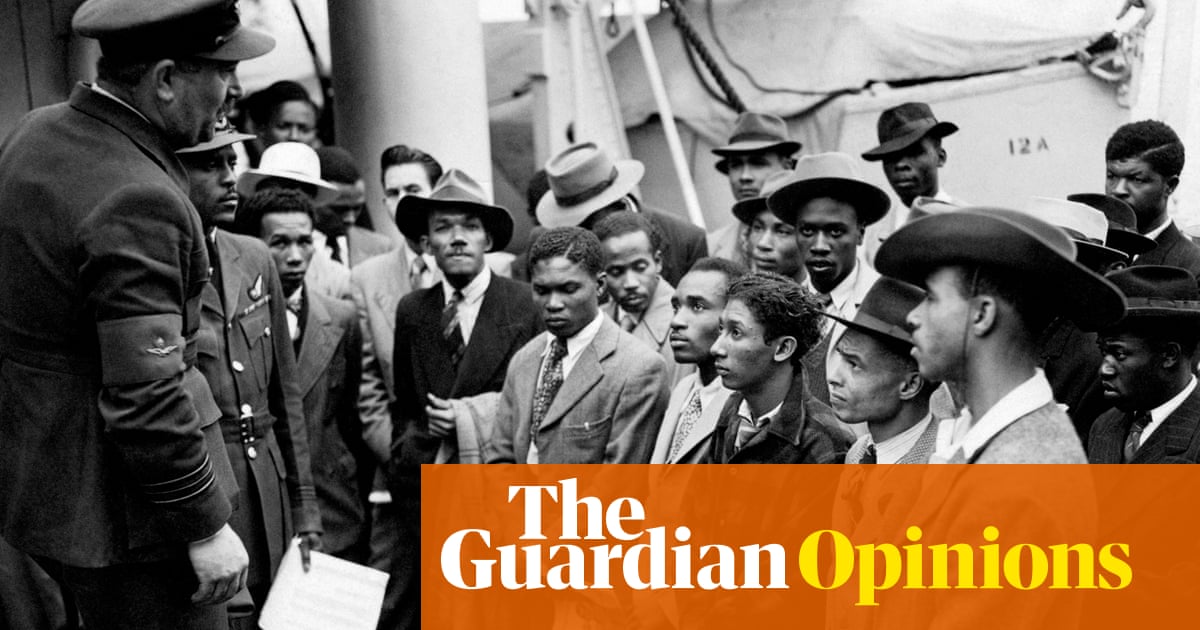
At the start of the second world war, authors asked themselves if they were going to write about their unprecedented times, or if they should be doing something more useful – joining the fire service, becoming an air raid warden. The phoney war, with its uncertainty and dread, proved hard to write about, but the blitz brought new experiences and a new language that demanded to be recorded or imaginatively transformed. Elizabeth Bowen began to write short stories, somewhere between hallucination and documentary, that she described as “the only diary I have kept”. Set in windowless houses populated by feather boa-wearing ghosts, these are stories that take place in evenings “parched, freshening and a little acrid with ruins”.
When lockdown hit last March, some writers offered their services as delivery drivers or volunteered at Covid test centres. Others attempted to make progress with preexisting projects, blanking out the new world careering into being in front of them. But nothing written in the past 18 months can be entirely free of Covid, with its stark blend of stasis and fear. And now, as we see the work made by writers who confronted it head on, questions emerge. Do we really want to read about the pandemic while it is still unfolding? Do we risk losing sight of the long view in getting too caught up with the contemporary?
First came Ali Smith’s Summer, the final instalment in a quartet produced at speed expressly in order to incorporate current events. Smith was responding to the pandemic in real time, so her novel provides an opportunity to measure its impact on one of our most inventive and intellectually fierce writers.
In Smith’s vision, the pandemic only increases the fragmentation that characterises her almost alarmingly profuse narratives. Summer includes speculations from Einstein alongside sections about the incarceration of “enemy aliens” on the Isle of Man in the second world war and ruminations on the pandemic recognisable from everyday life. As detainee immigrants are released, lest they collectively die in prison, Smith asks if it will be an opportunity for a new kind of world. The elderly Iris reflects that the comparisons to the war made by the media are inappropriate, because “the pandemic is making walls and borders and passports as meaningless as nature knows they are”.
Smith folded the beginning of the pandemic into wider concerns; this autumn sees the publication of a first wave of books written wholly in response to Covid-19. Burntcoat, which Sarah Hall began on the first day of the first spring lockdown, is about two lovers facing frightening new forms of intimacy in a plague-ravaged world. Sarah Moss’s The Fell, written during the bleak hopelessness of the winter lockdown, features a self-isolating woman maddened by confinement. And Life Without Children, a collection of stories written by Roddy Doyle from one Dublin lockdown to the next, explores with curious glee the new bearings of our world and its linguistic quirks (in Dublin shops, people ask for “one and a half social distances of plywood”).
The fearfulness of lockdown has also made it rich territory for crime writers. As an established writer of intense psychological thrillers, Catherine Ryan Howard knew that crime thrives in situations where secrecy, fear and suspicion are already rife. Her novel 56 Days begins with two lovers moving in together under the pressure of lockdown, and asks whether the perfect murder is precisely what lockdown allows. In Graham Greene’s wartime novel The Ministry of Fear, he has a character ask why any one murder matters amid so much death. A murder plot can seem driven by generic requirements, but Ryan Howard’s book focuses attention on the place of individual death and fragility in our lives.
As Smith’s character Iris observes, wartime comparisons have been frequent over the past two years. For many, Covid brought a strange new blitz spirit. In the hospitals, there has been something like a wartime atmosphere of disaster, but for so many of us, lockdown was a period of waiting. The challenge for writers is to create narrative out of people staying at home. The reward is that this was a time rich with revelations. Bowen described the mood of her wartime stories as “lucid abnormality”. She thought we were revealed to each other with a new starkness, becoming “heady and disembodied”.
I put the question of revelation to Hall, who, with a kind of terrible appropriateness, talks to me from her Covid sickbed. She thinks the virus has acted as a “clarifying force”. This is partly a case of exposing the cracks in society (government corruption, state services, inequality). But in Burntcoat there is exhilaration in the way the isolation of lockdown strips the lovers to their core, leaving them as vulnerable bodies, exposed to each other. Illness propels the discoveries here; sex becomes more intimate as the lovers get closer to death.
It’s telling that in Burntcoat, Hall made the virus more deadly and the lockdown more extreme than ours. Her response to the plotlessness of lockdown is a kind of febrile, extreme imaginative act – an enactment of our fears, filtered through the perceptions of a sculptor, Edith. Edith’s creativity (she makes vast public sculptures) is as extreme as the virus, which becomes itself a devilish fellow creative being: “It was – it is – perfect. Perfectly composed, star-like.” When I tell Hall that I admired this take on the virus, she reports her conversation with a virologist about the other viruses lurking around us, “ready to jump”. “Those viruses are there, getting ready to go … Covid isn’t going to be the one that really takes us down.” The novelist can warn against possible futures.
The revelations in Moss and Doyle’s books, which explore lockdown rather than illness, are more subtle. It has been said that everyone became more themselves during lockdown, and it has often seemed to me that, without the enforced normality of social interaction, people have become more extreme in their obsessions or anxieties. Moss and Doyle portray characters going gently mad under the pressure of social withdrawal. When I put this to the writers, Moss disagrees; she thinks we become most ourselves in company rather than isolation. For Doyle, however, affably chatty in his Dublin attic study, there was a kind of stripping to the core of Irish middle-aged men in particular that enabled them to lose some of the facade they’d acquired at their usually brutal schools.
Most of the protagonists in Doyle’s stories are late middle-aged men. There are men who use the lockdown to walk away from their lives, or to fall in love with the wives they haven’t noticed for years. Doyle has responded to the challenges of lockdown by making narrative splinter into the fragmented form of the short story collection.
Moss’s approach can be seen as the most difficult. If, as Smith suggests, Covid has shown how fragmented our world is, the danger of lockdown can be that there is too much coherence, rather than too little. Moss focuses in on the home of two people – Kate, a cash-strapped single mother, and her teenage son Matt – who are 10 days into self-isolating. Isolation itself becomes subject matter.
Recently, we’ve seen the will towards isolation and a related exhaustion with narrative and storytelling in books by Sally Rooney and Rachel Cusk. Rooney’s latest novel, Beautiful World, Where Are You, is set mainly before lockdown, but describes a writer, Alice, retreating to a remote seaside house, torn between protecting herself from exposure to others and being drawn compulsively back to the world. The book ends with a parenthetic glance at lockdown and Alice’s sense that for her “the difference between lockdown and normal life is (depressingly?) minimal”.
Rooney’s brusque deftness makes the single word contained in the brackets here loom large. Alice at this point is plagued by chronic ill health and has writer’s block; the narration dwindles to brisk epistolary summaries, and there’s a sense of Rooney using lockdown to find a flatter form of storytelling. Alice grapples with the heavily plotted novels she’s written previously and no longer finds them truthful; Rooney (whose neatly plotted Normal People was adapted into one of the TV hits of lockdown) seems to have been energised by similar doubts. Cusk’s Outline trilogy, which portrayed a woman increasingly isolating herself within her world, was an experiment in finding a form for the novel that didn’t rely on overall narrative structure. In some ways she’s the obvious writer to take on lockdown, and it’s there in the background of her latest novel, Second Place, where the narrator observes that her life has changed less than the lives of many others (“we had already simplified our existence”). Yet this novel is propelled by the narrative gusto Cusk previously eschewed.
Moss refuses the pleasures of isolation, perhaps because she herself seems to have feared the confinement of lockdown from the start. “Some people were more frightened of confinement than contagion,” she says, speaking from Copenhagen. Her novel is an elegy for all we have lost in lockdown, though she’s also hopeful about our capacity to survive it. She tells me that the book began with a question: who will catch us when we fall? The danger is that lockdown erodes community. Driven online, where binary thinking is the norm, we may cease to recognise each other’s humanity.
It is telling that both Moss and Doyle abandoned novels they were halfway through when the pandemic began, because they couldn’t think their way into an alternative form of the present. Reading these lockdown novels and stories, I’ve asked myself how many more can be published without the scenarios getting too repetitive, and what it would mean not to bring the pandemic into fiction. Are readers prepared to suspend disbelief and imagine an alternative version of the past few years? Or will writers avoid the literary challenges of the pandemic by turning to history or to the future?
Some writers were already thinking about the past; Tessa Hadley’s forthcoming novel is set in the 1960s, while Jonathan Franzen has embarked on a trilogy of books set in the 1970s. Lauren Groff has said that she wrote Matrix, her tale of 12th-century nuns, to escape Trump’s America; she may have been relieved when the pandemic hit that she was saved from that as well. But there is something very reminiscent of lockdown about her community of sisters, and narrative excitement here comes precisely from the attempt to keep the world at bay: the nuns create an alternative world by constructing a vast and unwieldy labyrinth.
One way to avoid writing about lockdown too narrowly is to imagine more extreme scenarios, as Hall has. Pandemics are the natural territory of science fiction, and of the climate change novel. Sci-fi writers have been thinking about what a pandemic might entail for years. Covid-19 has revealed how fully our lives are connected to the lives of other species, and Laura Jean McKay conducts a bravura investigation of the relations between humans and animals in her Arthur C Clarke award-winning novel, The Animals in That Country. The book imagines a world hit by “zooflu”, which leaves humans and animals able to understand each other’s language. Oana Aristide’s Under the Blue revealingly brings together an imagined pandemic with advances in AI – there’s a new artificial mind being developed to predict threats to human life and help us deal with crises of this kind. These books were both poised to come out when Covid hit, then delayed by lockdown. Books such as these have turned out to be prophetic because the resources of literary fiction – its artfulness, inventiveness and structural play – are themselves prophetic, dramatising the forces at work in our world with more vitality than textbooks or documentaries can.
The pandemic, in its actual and its more luridly imagined forms, will continue to find its way into fiction, even as the actuality of Covid becomes something more everyday (a new normal in which few retain a sense of smell and daily life is structured around lateral flow tests). Hanya Yanagihara’s forthcoming novel To Paradise has a strand extending to 2093, imagining a totalitarian world riven by plagues that can be seen as a dark extension of our times. Sequoia Nagamatsu’s How High We Go in the Dark spans hundreds of years as humanity attempts to rebuild itself in the aftermath of a plague. And Gary Shteyngart’s Our Country Friends, set closer to home in the 2020 lockdown, is a portrayal of a group of friends waiting out the pandemic, Boccaccio-style, in a rural retreat. These three novels, all out in January, show how different sorts of high-concept literary device are being enabled, and also made necessary, by the pressures of our current times. There will be more pandemic novels to come, novels asking what happened to us as a society in lockdown, novels exploring what Covid has revealed about whether our societies and the stories we tell about them hold together or not; lucid abnormality flashed through Covid’s searchlights.












